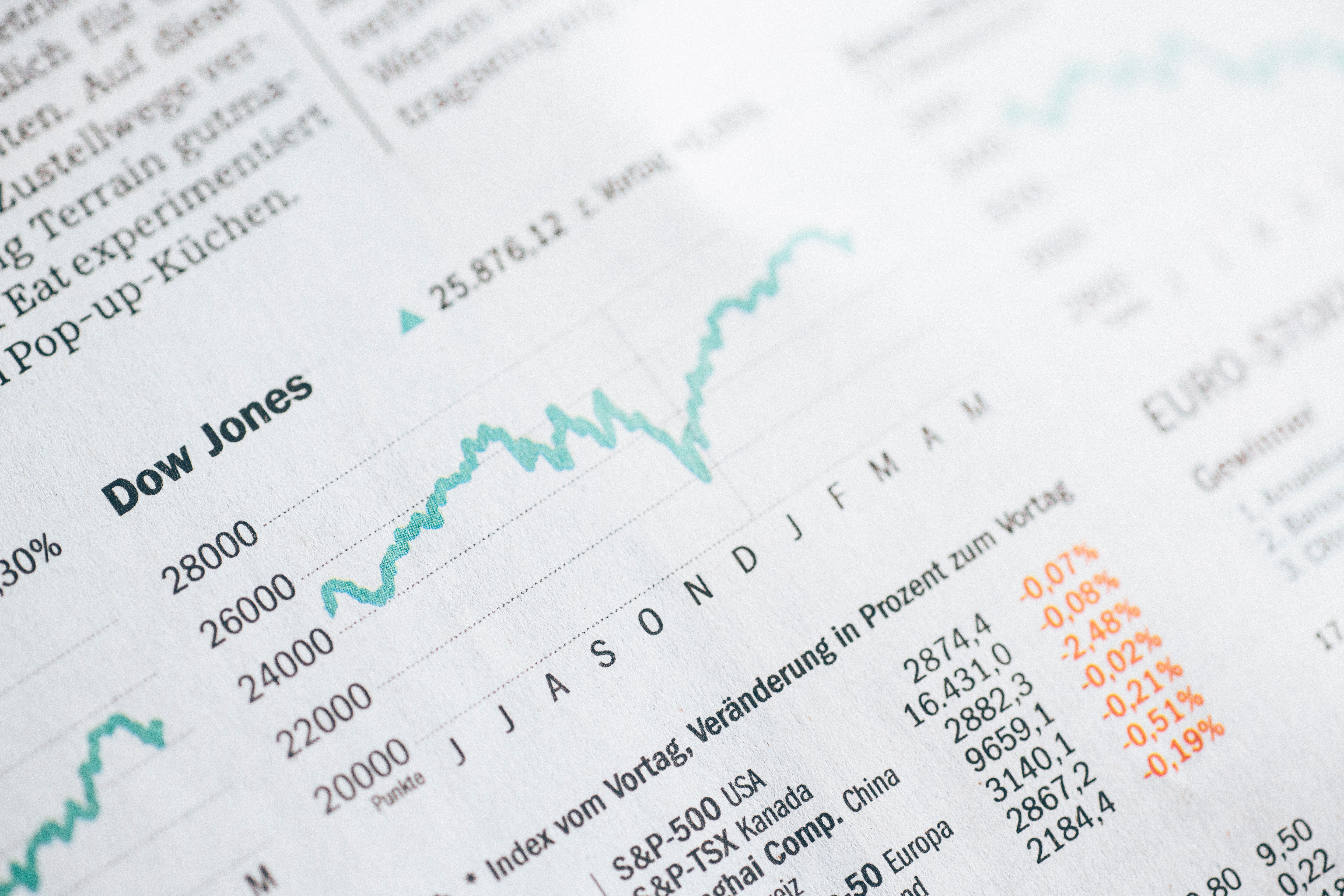If your idea of a diverse portfolio is having both Apple and Microsoft, you need to understand the concept of asset classes better. Even if you own these high-performers, you’ve only invested in a single type – Mega-cap stocks.
To diversify your investment portfolio, you’re either going to hire someone to do it for you or DIY. The latter approach requires an understanding of asset classes.
What Is an Asset Class?
It’s a grouping of similar investments varying by what form they take, how they behave, or how they make money. The primary basis of portfolio diversification rests on how asset classes intermingle with each other.
There should be little correlation between them. Some even have a negative correlation; when one underperforms, the other should outperform.
If there’s a financial collapse or catastrophic event, all investments may suffer a downturn, but not to the same degree.
You can use this detached correlation to provide portfolio stability.
Asset Classes Categorized
While there is no consensus on what the complete list of asset classes are, almost all include equities (e.g., stock), fixed income (e.g., bonds), and cash or cash equivalents (e.g., savings).
These are the big three most people use because they’re easy to manage in either brokerage or retirement accounts.
Then there are the less utilized asset classes such as real estate and commodities. And finally, some niche asset classes like cryptocurrencies, derivatives, and artwork that some use to diversify their portfolios further.
Did You Know?
There are even classes within asset classes, most notably within equities.
Because there are several available stock choices, you can make distinctions between the issuing companies.
It’s because traits such as size, location, and growth characteristics can determine how each stock reacts given certain economic scenarios.
Equities
Equities are stocks. Stock is something that represents fractional ownership of a company. This ownership entitles the holder of the stock to a portion of the company’s assets and profits.
We’re going to park here for a while. Why?
As mentioned earlier, within this large asset class, there are many ways to classify them further. Within each of these sub-classes, there is risk and return factors to influence your choices.

Market Capitalization
It’s also known as Market Cap and defines the size of the issuing company’s stock. It’s the number of shares outstanding in the marketplace multiplied by the price per share.
That number represents the total value of the company’s stock in the market.
There are three widely accepted market cap categories: Large-cap, mid-cap, and small-cap. Unofficially, some refer to two other capitalization categories: Mega-cap and micro-cap. These are the biggest of the big and the smallest of the small, respectively.
Large-cap stocks are of companies with market capitalizations over $10 billion. Companies with valuations above $200 billion are sometimes known as mega-cap, such as Apple, Amazon, or Exxon-Mobil.
Mid-cap stocks are companies with market capitalizations between $2 billion to $10 billion. As the name suggests, these are mid-sized companies with room to grow but are already well-established.
Small-cap stocks are of companies with market capitalizations of less than $2 billion, while micro-cap stocks are less than $300 million. These companies are the up-and-comers and startups.
| Stocks | Bonds | Real Estate | Commodities | Cash | |
|---|---|---|---|---|---|
| Market Cap Size | Micro, Small, Mid, Large, and Mega-Cap | N/A | Small, Mid, Large | N/A | N/A |
| Style | Growth, Value, Blend, Developed, Emerging | Government, Corporate, State, and Municipal | REITs, Rental Property, Buildings, Land, RE Debt & Equity | Energy, Industrial & Precious Metals, Livestock & Meat, Agriculture | Money Market, CDs, T-bills |
| Region | Domestic or International | Domestic or International | Domestic or International | Domestic or International | Domestic or International |
| Term Length | N/A | Short, Intermediate, and Long-Term | Depends on investment style | N/A | Depends on investment style |
Market Cap and Allocation
How do you use market cap for your portfolio allocation? Like with all asset classes, you look at the characteristics of each type.
Since large-cap stocks are of large, well-established companies, you can expect the value to be steady and carry low risk. There may not be much room for growth, but you may be willing to trade growth for stability.
On the other end of the spectrum, small-cap stocks are of young companies with limitless potential. The risk of these companies going belly-up is higher, but so is the chance of significant returns.
And finally, mid-cap stocks should give you a balance of risk and potential reward. However, this isn’t dogmatic. In the last several years, mid-caps have outperformed both large and small-caps.
None of this is predictive, but if you have the right mix of market caps in your stocks, it should diversify your portfolio.
They're perfect for DIY investors who prefer a hands-off approach but can still pick individual stocks and funds. We specifically use them for the Golden Butterfly portion of our portfolio.
Growth vs. Value
I’ve never been comfortable with these being an “asset class” subset since classification should be on objective, measurable data.
Determining whether a stock is a growth or value investment involves a bit of how the market perceives the company. Yes, brokerages and investment professions use numbers to back up their assessments, but in the end, it’s built on perception.
Growth Stocks
A growth stock is when it’s believed the company has room to grow that’s currently untapped.
It can be because of corporate philosophy, product line, or the competitor’s expected market share loss. When that stock reaches its potential, it stops being a growth stock.
Value Stocks
A value stock is when it’s trading at a lower price than what it’s worth. Again, it’s based on a multitude of factors and expert opinions.
The company may have taken a reputation hit, or its competitors are unduly given merit. Once the rest of the investors realize the stock is undervalued, and the price rises to meet it, the stock stops being considered a value stock.
Growth / Value Blend
Lastly, some stocks are considered a blend of these two characteristics. They may have some room to grow and not currently trading at prices reflecting their value.
Each will be to a lesser degree, but adding this choice reduces your exposure to one category.
No stock will be in these categories forever. Thus, utilizing these traits for asset allocation will require more monitoring as the situation changes.
Regions
The location of the issuing company’s stock can also be a factor in asset allocation. U.S.-based companies are under a different set of rules than companies in other countries.
Their markets and tax structures differ significantly. Even the way they handle marketing, labor, and economic downturns can affect their revenues.
The two main asset classes based on location are domestic and international.
Some break down to specific regions such as Asia or Europe within the international asset class, while others divide by how developed the economies are.
Emerging market stocks include companies in developing countries, which makes them more volatile.
The purpose of asset classes is to put stocks into categories that share traits. When the domestic market is down, it could mean the international market is up, and vice-versa.
Balancing your portfolio with a mix of foreign and domestic investments helps balance these fluctuations.
Stocks Don’t Stay Put
All of these characteristics of stocks are not permanent. Companies can grow or shrink out of their market-caps.
Stocks can stop having growth potential or being values. Even where the company exists could change with the right merger or acquisition.
One way to avoid rebalancing your stock portfolio as the companies move in and out of various asset classes is to invest in mutual funds or ETFs that adjust them for you.
There are market cap, growth and value funds, and ETFs that rebalance automatically.
Get our best strategies, tools, and support sent straight to your inbox.
Fixed Income
Fixed-income assets pay a set amount of interest over a given period. Usually, the investment makes regular payments of interest until the asset matures and returns the principal to the investor.
Bond funds and bond ETFs work differently, but the mechanics are similar.
If a stock represents a share of ownership in a company, a bond represents a loan to it.
Tweet ThisThe fixed income asset class includes bonds (in all of their forms), Certificates of Deposit (CDs), and money markets.
What differentiates them is who issues them and the involved risk level.
Risk? Although you may have heard bonds are safer than stocks, it doesn’t mean they’re devoid of them.
There’s the risk of default, inflationary risk, and interest rate fluctuation risk. Granted, these are low compared to the drastic changes in the stock market.
Categorizing Bonds
The main distinction between bonds is who issues them: Federal, local, and even foreign governments issue bonds.
Corporations can also issue bonds, and, depending on the credit rating of the company, there are different types of corporate bonds.
Banks issue CDs and Money Market investments.
Regardless of who issues the fixed income security, the interest rate will vary depending on the issuer’s risk.
How Risk Affects Interest Rates
Usually, the riskier the bond issuer, the higher the interest rate.
The next distinction between bonds is the term (or how long until it matures). Most bonds mature in the range of 1 to 30 years.
Short-term bonds have maturity terms of one to three years. Intermediate-term is usually between four to ten years and long-term bonds above that.
The longer the bond term, the higher the interest rate offered. However, you’ll have less accessibility to the underlying cash in the meantime.
Government Bonds

Government bonds are among the safest interest-bearing investments available. They’re backed by the full faith and credit of the issuing government.
However, like with most investments, the safer they are usually mean a lower return.
The federal U.S. government issues a variety of bonds based on duration and face value. Face value is simply the value of the bond at maturity, after all paid interest.
You may have heard these called T-notes, T-bonds, and T-bills (T for Treasury).
T-bills are interesting because they don’t pay interest but rather sell at a lower price than face value until maturity.
The next type of government bond is a municipal bond. U.S. states, counties, and cities issue these to fund local projects like schools or roads.
Lastly, for the adventurous, there are foreign government bonds. These may not be as readily available or widely-used in most U.S. brokerage or retirement accounts, but they’re out there.
Use Caution
Though government bonds are usually the safer investment choice, it’s not always the case.
Municipalities have gone bankrupt and not honored their bond debt. If someone overthrows a foreign government, the new regime may not recognize it.
Corporate Bonds
While corporate bonds also have variable maturity dates, the distinction is the creditworthiness of the company.
It will largely determine the interest rate that they offer.
Most consider corporate bonds safer than the same company’s stock. The reason is that in bankruptcy, the company must pay bondholders and lenders back first.
Rating agencies determine a company’s creditworthiness—these agencies rate corporations based on history and risk profile.
Highly-rated companies are sometimes referred to by a letter grade such as “triple-A” (the cream of the crop).
Riskier, low-rated company bonds are called “high-yield” bonds because they offer substantially higher interest rates due to their riskiness.
You may have also heard these called “junk bonds,” which some may say is more fitting.
CDs and Money Markets
Among the fixed income investments, CDs and Money Markets are usually the most liquid. What these are and how they behave have more to do with who you deal with to get them.
You may have heard your local bank offering CDs and money market accounts. These tend to be more liquid than similar-sounding investments from brokerage firms.
A CD is a Certificate of Deposit. The investor deposits a certain amount of money into it. They have set maturity dates and pay interest regularly or at the end of the term.
Usually, with a CD you get from your bank, the amount of money you invest determines the interest rate. Brokered CDs typically have fixed amounts.
If you want to liquidate your bank CD early, you may have to give up some interest and pay a fee. If you want to do the same with a brokered version, you have to find a buyer for it in the bond market, which affects the price.
Money market accounts at a bank are mostly glorified savings accounts from the investor’s perspective.
There are usually more restrictions than other accounts, but the interest rate will also be marginally higher. These are also FDIC insured.
Money market funds at a brokerage or the like are different.
First, the FDIC doesn’t insure them. They’re mutual funds that invest in fixed-income investments like the ones mentioned above.
But since the underlying investments are less risky, the interest is lower.
Cash and Cash Equivalents
Cash may not sound like an investment. But if the economy tanks, it will likely be worth relatively more in that moment than your other investments.
This reason is why it’s an asset class.
Cash has near-zero risk besides inflation which is why it can be an integral part of an asset allocation strategy.
It also has immediate liquidity, which means you can access it any time you want. It also means you can use it quickly if another investment opportunity arises.
Cash equivalents are anything that’s quickly converted to cash such as savings accounts or other highly-liquid assets. Some put money market accounts and funds in this category.
As the time you’re going to draw down your retirement or college savings accounts gets closer, you’ll want to hold some of your assets as cash or cash equivalents.
Alternative Assets
Eighty to ninety percent of most everyday investors limit their asset class allocations to the above assets. It’s especially true if most of your holdings are in index funds, mutual funds, and bonds, or bond funds.
However, there are alternative asset classes some use to diversify their investments further.
Commodities
Commodities are materials that have some sort of use in the world. It can be in the form of raw materials such as oil, copper, or corn.
Investing in commodities can be intimidating because it’s not like stock investing. Instead of buying shares of an intangible company, there’s real stuff behind commodities transactions.
You can buy and take possession of a barrel of oil and sell it at a future date. Or you can transact in futures, which is acting as the “middle-man” between suppliers and manufacturers.
You can also invest in mutual funds or ETF equivalents, or companies with a hand in dealing with particular commodities.
It’s by far the easiest way to gain exposure to this market.
Gold is a unique commodity in that it’s not consumed or used for manufacturing. Depending on economic conditions, it’s used as a currency, a store of value, or even a collectible.
As an asset, it also behaves differently than almost any other.
It’s why you often hear of how gold is a safe-haven during economic downtimes. Ironically, it’s because investors perpetuate this belief.
In the market, if everyone believes something, it becomes so.
Real Estate
Real estate is land, buildings, contracts, or funds investing in real estate. Similar to commodities, you can invest in real estate in multiple ways.
It can be buying a property you rent out, investing in mutual funds, or REITs (Real Estate Investment Trusts) that do the legwork for you.
Even entire investing platforms let you own a share of an investment property, and you get a portion of the rent.
Currencies

There’s debate on whether currencies are an investable asset class. Why?
Because the value of a currency is only relative to other currencies. Your Yen’s value increases because of its relation to the dollar you spent buying it.
Cryptocurrencies are examples of this dilemma; there isn’t a government (or institution) backing them. It’s simply worth whatever someone is willing to pay.
With most other asset classes, there are trends and ways to predict how it will behave in specific economic conditions, not so with currencies.
Final Word
Again, this article only describes what asset classes are with examples. The list is extensive but not comprehensive.
There are also new asset classes and vehicles for investing in them released all the time.
How to use them to create a diverse and stable portfolio is an entirely different subject. But knowing what defines an asset class helps to build one suitable to your tastes.



